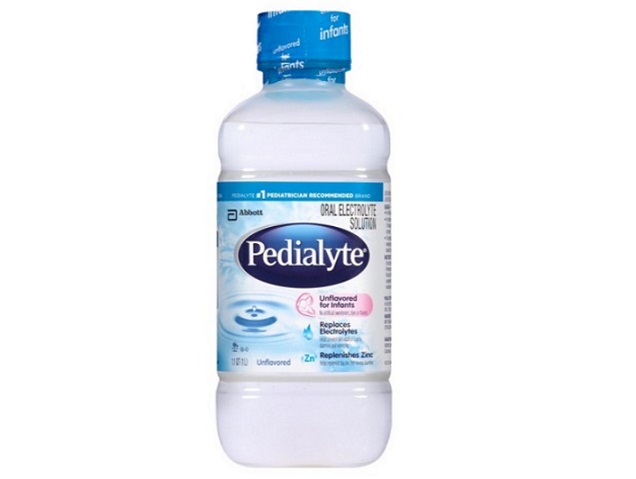Pedialyte is a drink used to replace the fluids and minerals that are deficient in people suffering from dehydration. Usually this happens when suffering from diarrhea and / or vomiting. The drink is filled with electrolytes, glucose and fructose to rehydrate the body.
Traditionally it was designed for children. However, it is also used by adults who may have had a few too many drinks the night before to reduce the effects of a debilitating hangover. While we assume the hangover is not the problem with your dog (we certainly hope not!!), if it appears to be dehydrated or is refusing liquids, is it okay to give Pedialyte for dogs?
Can dogs have Pedialyte?
The answer is a definite yes, but take note of some of the guidelines.
How to tell if your dog is dehydrated
Dehydration can be caused by many factors but the most common are diarrhea and vomiting. It can also be caused by dogs refusing to drink enough water, which is common in combination with vomiting as they are struggling to keep things down.
Apart from the vomiting or diarrhea, other ways to recognize dehydration is through excessive panting, lethargic or sluggish movement and areas of dry skin, especially on the face, around the nose, mouth and eyes.
The mouth may be dry and the dog may also appear to be depressed. If the dog is neither overweight nor underweight, hydration levels can be measured by the elasticity of the dog’s skin. Raise the skin on the back of the neck, or between the shoulder blades. If the dog is adequately hydrated, the skin will immediately settle back into its natural position, if it takes a few moments then this is another sign of dehydration.
In this situation, you can give Pedialyte to dogs, though the unflavored version is safest. In fact, for treating dehydration or an imbalance with electrolytes and fluids, it can be a very effective method.
Your guide to administering Pedialyte
The main ingredients of Pedialyte are sodium chloride, potassium and magnesium. None of which will cause your dog any harm and all become depleted when the dog is expelling more liquid (vomiting or diarrhea) than it is consuming.
Pedialyte can be administered through a bottle, mixed it into their drinking bowl or into their regular dog food, or if these methods are not proving successful, a syringe might be the last resort.
For quantity, about one quarter of a cup every hour should be fine for larger dogs, less for smaller dogs. Another rough guide would be to take 15 ml for every pound of the dog’s weight per day. It is important to mix it with water at a ratio of 1:1. But whatever you do, it is important to be consistent with dosage and timings to allow the dogs system to get used to the additional dosages.
It is always safest to give your dog an unflavored version of Pedialyte as the flavorings could be an irritant to your dog. The acidity can even make the tummy worse.
A Vomiting Dog
When the dog is vomiting, it is important that it drinks a small amount of water on a constant basis. Drinking too much, which is a common mistake, only leads to more vomiting and does nothing to help dehydration. Pedialyte should only be administered after the dog has gone 4 hours without vomiting.
Dangers
If your dog is not sick or dehydrated, it is NOT advisable to give it Pedialyte. It is meant as a replacement liquid, and if there is nothing to replace, then you run the risk of unnecessarily increasing sodium levels in the blood.
Also, despite some information found on the internet, Pedialyte is not suitable for treating the Parvo Virus.
The virus attacks the intestinal lining which in turn causes diarrhea. Dogs with the virus should be taken to the veterinarian immediately for antibiotics and intravenous fluids which is the only safe treatment.
Conclusion
Pedialyte is perfectly fine for dogs and can really help with tackling the problems of dehydration. It is important to remember to always use the unflavored version, and to make sure it is diluted 50/50 with water. That being said, there are products specifically designed to help combat dehydration in dogs. They also come in flavors that are more likely to appeal to your furry friend.
It is advised to always consult a veterinarian before commencing any personal treatment plans for your dog, to ensure a correct diagnosis has been made and the proper care and treatment has been identified. Sometimes intravenous or subcutaneous (under the skin) are much better solutions and your vet will know when this is the more preferable solution.
References:
https://www.petcarerx.com/article/what-to-feed-a-sick-dog-so-theyll-feel-better/1380







Leave a Comment